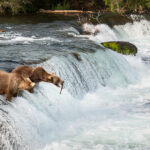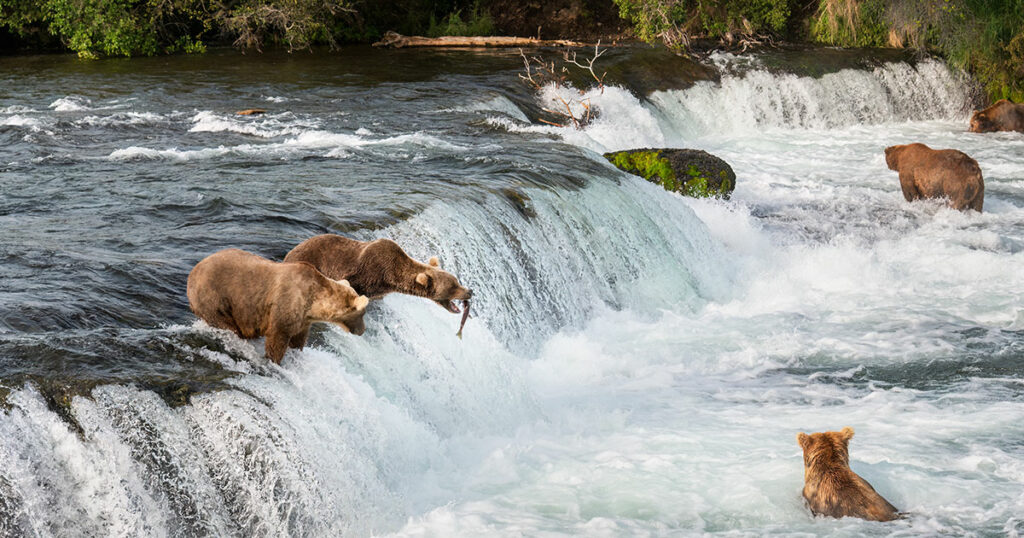Sort By State:
ALABAMA
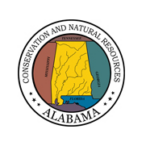
Alabama Department of Conservation and Natural Resources
The Alabama Department of Conservation provides a variety of programs, activities and opportunities to help you enjoy the great outdoors. The department promotes wise stewardship and enjoyment of the state’s natural resources through five divisions: Marine Resources, State Lands, State Parks and Wildlife and Freshwater Fisheries.
The Department of Conservation and Natural Resources is an executive and administrative department of the State of Alabama created by statute. The Commissioner, appointed by the Governor as a member of the Cabinet, advises the Governor and Legislature on the management of freshwater fish, wildlife, marine resources, state lands, state parks, and other natural resources.
ALAska
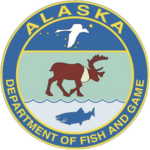
Alaska Department of Fish and Game
The Alaska Department of Fish and Game manages approximately 750 active fisheries, 26 game management units, and 32 special areas. We work to foster the highest standards of scientific integrity and promote innovative sustainable fish and wildlife management programs to optimize public uses and economic benefits.
From making policy and management decisions to providing education and outreach programs, interacting with and involving the public is vital to our mission and goals.
Arizona
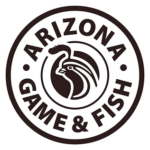
Arizona Game and Fish Department
The mission of the Arizona Game and Fish Department is to conserve Arizona’s diverse wildlife resources and manage for safe, compatible outdoor recreation opportunities for current and future generations.
Every day the dedicated team at the Arizona Game and Fish Department is actively engaged in wildlife conservation efforts across the state. Learn about our ongoing initiatives to conserve and protect Arizona’s rich biodiversity, which includes more than 800 wildlife species. Find out how you can contribute to these important conservation efforts.
Arkansas
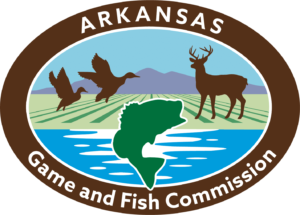
Arkansas Game and Fish Commission
There are so many ways to enjoy it. From hunting to fishing to exploring the great outdoors, the Arkansas Game and Fish Commission offers countless opportunities to make memories.
The Arkansas Game and Fish Commission plays an important role in keeping The Natural State true to its name. During the last 100 years, the agency has overseen the protection, conservation and preservation of various species of fish and wildlife in Arkansas. An essential part of ensuring healthy wildlife populations involves people. Agency programs geared toward the public generate awareness of ethical and sound management principles. Whether it be educational programs, fishing and hunting regulations or environmental awareness, working with people is just as important a factor in managing wildlife as any other.
California
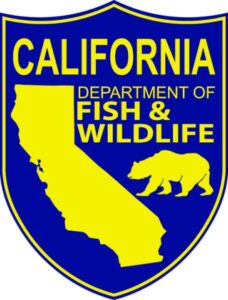
California Department of Fish and Wildlife
The Department of Fish and Wildlife (DFW) is a steward of California’s wildlife resources in a tri-furcated system that divides wildlife management between the Legislature, the Fish and Wildlife Commission (which theoretically sets policy) and the department, which implements it. In reality, the responsibilities are intertwined. Established within the Natural Resources Agency, the department manages and protects the state’s fish, wildlife and native habitats while overseeing their recreational, commercial, scientific and educational use.
It was known as the Department of Fish and Game until a name change that took place January 1, 2013. The department also employs a law enforcement division of game wardens to prevent poaching and other illegal activities related to its functions.
Colorado
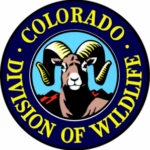
Colorado Division of Wildlife
Colorado Parks and Wildlife (CPW) is a national leader in conservation, recreation and wildlife management. As a Division of the Colorado Department of Natural Resources, we are Colorado’s primary agency focused on protecting and caring for some of our most valued and valuable resources. These resources form the very fabric of our state and define who we are. Our mission is to perpetuate the wildlife resources of the state, to provide a quality state parks system, and to provide enjoyable and sustainable outdoor recreation opportunities that educate and inspire current and future generations to serve as active stewards of Colorado’s natural resources.
The mission of Colorado Parks and Wildlife is to perpetuate the wildlife resources of the state, to provide a quality state parks system, and to provide enjoyable and sustainable outdoor recreation opportunities that educate and inspire current and future generations to serve as active stewards of Colorado’s natural resources.
Connecticut

Connecticut Department of Energy and Environmental Protection
The Connecticut Department of Energy and Environmental Protection (DEEP) is charged with conserving, improving and protecting the natural resources and the environment of the state of Connecticut as well as making cheaper, cleaner and more reliable energy available for the people and businesses of the state. The agency is also committed to playing a positive role in rebuilding Connecticut’s economy and creating jobs – and to fostering a sustainable and prosperous economic future for the state.
DEEP was established on July 1, 2011 with the consolidation of the Department of Environmental Protection, the Department of Public Utility Control, and energy policy staff from other areas of state government. The environmental protection agency had been established in 1971 at the dawn of the environmental movement, while the public utilities regulatory authority traces its roots back more than 150 years to the state’s Railroad Commission.
Delaware
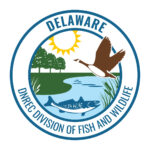
Delaware Division of Fish and Wildlife
The Division of Fish and Wildlife conserves and manages Delaware’s fish and wildlife and their habitats, and provides fishing, hunting, wildlife viewing and boating access on approximately 68,000 acres of public land. The division oversees wildlife resource conservation and control of mosquito populations and offers hunter, boating and aquatic education programs. It provides licenses and registration for hunting, fishing and boating.
The division manages wildlife and wildlife habitat, public wildlife areas, hunting and wildlife viewing.The division provides hunting and fishing licenses, permits, boat registrations, waterfowl stamps, trout stamps and Conservation Access Passes. The division works to control mosquitoes and ticks in Delaware and manages and restores marshlands throughout the state.
Florida

Florida Fish and Wildlife Conservation Commission
The Florida Fish and Wildlife Conservation Commission’s purpose is to manage fish and wildlife resources for their long-term well-being and the benefit of people. The Florida Constitution authorizes the commission to enact rules and regulations regarding these resources.
Georgia
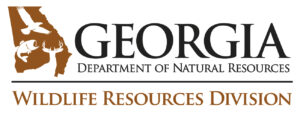
Georgia Department of Natural Resources Wildlife
The Georgia Department of Natural Resources (DNR) is comprised of five divisions which carry out DNR’s mission to sustain, enhance, protect and conserve Georgia’s natural, historic and cultural resources. As one of five divisions within DNR, the Wildlife Resources Division (WRD) is charged with conserving, enhancing and promoting Georgia’s wildlife resources, including game and nongame animals, fish and protected plants. WRD is comprised of three sections: Game Management, Fisheries Management, and Wildlife Conservation.
The Game Management Section manages one million acres of land and more than 100 Wildlife Management Areas (WMAs) for hunting, fishing, wildlife enhancement, bird watching, hiking, camping and conservation education. Game Management conducts research and surveys to monitor hunter harvests, wildlife populations and habitats. These efforts support setting regulations and other management activities as well as providing technical assistance to landowners, private organizations and governmental agencies.
Hawaii
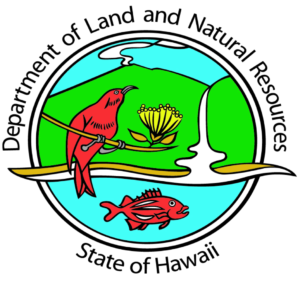
Hawaii Department of Land and Natural Resources
The Department of Land and Natural Resources, headed by an executive Board of Land and Natural Resources, is responsible for managing, administering, and exercising control over public lands, water resources, ocean waters, navigable streams, coastal areas (except commercial harbors), minerals, and all interests therein. The department’s jurisdiction encompasses nearly 1.3 million acres of State lands, beaches, and coastal waters as well as 750 miles of coastline (the fourth longest in the country). It includes state parks; historical sites; forests and forest reserves; aquatic life and its sanctuaries; public fishing areas; boating, ocean recreation, and coastal programs; wildlife and its sanctuaries; game management areas; public hunting areas; and natural area reserves.
Idaho
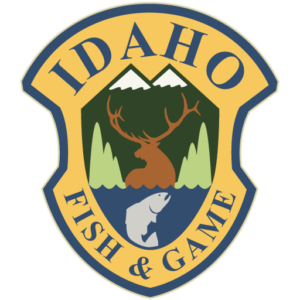
Idaho Fish and Game Department
The Idaho Department of Fish and Game (IDFG) is the Idaho state department which is responsible for preserving and managing Idaho’s wildlife, including mammals, fish, birds, plants, and invertebrates.
Idaho Fish and Game’s mission is to protect, preserve, perpetuate and manage Idaho’s wildlife resources.
In 2014, Idaho Fish and Game celebrated the 75th anniversary of the 1938 voter initiative that created the department as we know it today. The voter initiative established the Fish and Game Commission and the goal of establishing a professional wildlife agency.
Illinois

Illinois Department of Natural Resources
Illinois Department of Natural Resource’s mission is to manage, protect and sustain Illinois’ natural and cultural resources; provide resource-compatible recreational opportunities and to promote natural resource-related issues for the public’s safety and education. We promote: public understanding and appreciation of natural resources, education, science, and public safety of natural resources, and provide resource-compatible recreational opportunities
Indiana
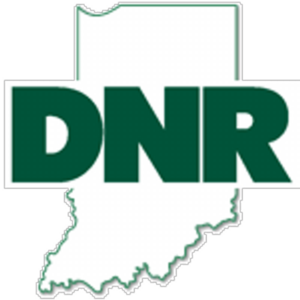
Indiana Department of Natural Resources
The mission of the Indiana Department of Natural Resources is to protect, enhance, preserve, and wisely use natural, cultural, and recreational resources for the benefit of Indiana’s citizens through professional leadership, management, and education.
To satisfy such a broad and diverse responsibility, the Department is divided into two distinct areas of responsibility: the Regulatory Management Team; and, the Land Management Team. The Regulatory Management Team consists of the Divisions of Water; Entomology and Plant Pathology; Historic Preservation and Archaeology; Reclamation; and Oil and Gas. Outdoor recreation and land management programs are housed within the Land Management Team. That unit consists of State Parks; Nature Preserves; Land Acquisition; Fish and Wildlife; Outdoor Recreation and Forestry.
Iowa

Iowa Department of Natural Resources
The DNR manages fish and wildlife programs, ensures the health of Iowa’s forests and prairies, and provides recreational opportunities in Iowa’s state parks. Just as importantly, the DNR carries out state and federal laws that protect air, land and water through technical assistance, permitting and compliance programs. The DNR also encourages the enjoyment and stewardship of natural resources among Iowans through outreach and education.
The DNR’s mission is to conserve and enhance our natural resources in cooperation with individuals and organizations to improve the quality of life in Iowa and ensure a legacy for future generations.
Kansas
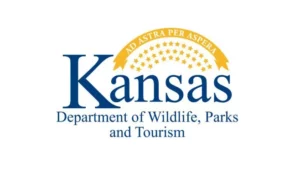
Kansas Department of Wildlife and Parks
The Kansas Department of Wildlife & Parks (KDWP) is a cabinet-level agency with a Secretary appointed by the Governor. A seven-member, bipartisan commission, also appointed by the Governor, advises the Secretary and approves regulations governing outdoor recreation and fish and wildlife resources in Kansas. The commission conducts business during regular public sessions.
KDWP’s mission is to conserve and enhance Kansas’ wildlife and its habitats, ensuring current and future generations appreciate and enjoy these living resources and associated recreation, while informing the public of the status of Kansas’ natural resources, gaining understanding and support in achieving this mission.
Kentucky
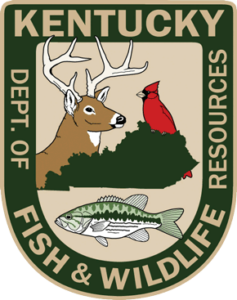
Kentucky Department of Fish and Wildlife Resources
The Kentucky Department of Fish and Wildlife Resources’ mission is to conserve, protect and enhance Kentucky’s fish and wildlife resources and provide outstanding opportunities for hunting, fishing, trapping, boating, shooting sports, wildlife viewing, and related activities.
Fish and wildlife resources in Kentucky are public resources held in trust by the Commonwealth of Kentucky, for which Kentucky Fish and Wildlife serves as steward on behalf of the people. Each of us has opportunities to enjoy fish and wildlife in a variety of ways, and together we all share in the responsibility to conserve them, too.
Louisiana

Louisiana Department of Wildlife and Fisheries
The Louisiana Department of Wildlife and Fisheries is responsible for managing and protecting Louisiana’s abundant natural resources.
Our mission is to manage, conserve, and promote wise utilization of Louisiana’s renewable fish and wildlife resources and their supporting habitats through replenishment, protection, enhancement, research, development, and education for the social and economic benefit of current and future generations; to provide opportunities for knowledge of and use and enjoyment of these resources; and to promote a safe and healthy environment for the users of the resources.
Maine

Maine Department of Inland Fisheries and Wildlife
Maine Department of Inland Fisheries and Wildlife (MDIFW) preserves, protects, and enhances the inland fisheries and wildlife resources of the state. Established in 1880 to protect big game populations, MDIFW has since evolved in scope to include protection and management of fish, non-game wildlife, and habitats, as well as restoration of endangered species like the bald eagle.
In addition to its conservation duties, MDIFW is also responsible for enabling and promoting the safe enjoyment of Maine’s outdoors — from whitewater rafting to boating, snowmobiling, hunting, fishing, and wildlife observation.
Maryland

Maryland Department of Natural Resources
The Maryland Department of Natural Resources leads the state toward a resilient future by using data, partnerships, and an innovative spirit to improve ecological, social, and economic outcomes for all communities.
Their vision statement is that they are inspired by nature and rooted in science to improve and grow stewardship for Maryland’s natural resources.
Massachusetts
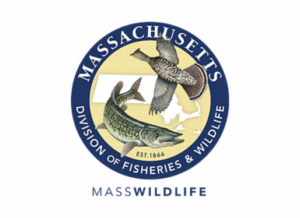
Massachusetts Division of Fisheries and Wildlife
MassWildlife is responsible for the conservation of freshwater fish and wildlife in the Commonwealth, including endangered plants and animals. MassWildlife restores, protects, and manages land for wildlife to thrive and for people to enjoy.
Missouri

Missouri Department of Conservation
The Missouri Department of Conservation administers more than 975,000 acres located throughout the state. About 63 percent, or 615,000 acres, are forested.
The forest land occurs on a wide variety of sites and, as a result, there is a broad diversity of plant and animal communities present. Oak and hickory are the most common tree species, but other important species are also found, such as shortleaf pine, eastern red cedar, walnut, ash and cottonwood.
State forest land provides a variety of environmental benefits including wildlife habitat, outdoor recreation, watershed protection, scenic beauty and wood products.
Michigan

Michigan Department of Natural Resources
The Michigan Department of Natural Resources is committed to the conservation, protection, management, use and enjoyment of the state’s natural and cultural resources for current and future generations.
We strive to be a nationally recognized leader in protecting natural and cultural resources, ensuring sustainable recreation use and enjoyment, enabling strong natural resource-based economies, improving and building strong relationships and partnerships, and fostering effective business practices and good governance.
Minnesota
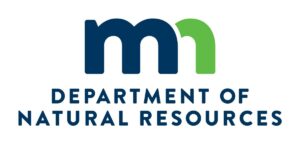
Minnesota Department of Natural Resources
The Minnesota Department of Natural Resources works to integrate and sustain the interdependent values of a healthy environment, a sustainable economy, and livable communities. DNR’s integrated resource management strategy shares stewardship responsibility with Minnesotans and partners to manage for multiple interests. DNR protects the state’s natural heritage by conserving the diversity of natural lands, waters, and fish and wildlife that provide the foundation for Minnesota’s recreational and natural resource-based economy
DNR manages natural lands such as forests, wetlands, and native prairies; maintains healthy populations of fish and wildlife; and protects rare plant and animal communities throughout the state. DNR manages the state’s water resources, sustaining healthy waterways and ground water resources. DNR provides access to enrich public outdoor recreational opportunities, such as hunting, fishing, wildlife-watching, camping, skiing, hiking, biking, motorized recreation, and conservation education through a state outdoor recreation system that includes parks, trails, wildlife management areas, scientific and natural areas, water trails, and other facilities.
Mississippi

Mississippi Department of Wildlife, Fisheries and Parks
Mississippi’s legislative leadership recognized the need for wildlife conservation in our state and founded the Mississippi Game and Fish Commission in 1932. Since then, the Agency has been the state’s premier conservation organization.
In 1989, the Bureau of Parks and Recreation merged with the Mississippi Department of Wildlife Conservation to form the Mississippi Department of Wildlife, Fisheries, and Parks (MDWFP). The MDWFP is a large state agency charged by state statute to conserve, develop, and protect Mississippi’s natural resources and provide continuing outdoor recreation opportunities.
Montana

Montana Department of Fish, Wildlife and Parks
FWP’s Mission: Steward the fish, wildlife, parks, and recreational resources for the public, now and into the future.
In 2016, FWP created a Vision and Guide to help direct the agency for the next 10 years. The guiding document is the result of an initiative — called ’15 and Forward — that helped identify what we should do over the decade in order to best address changing expectations and new challenges.
The Vision and Guide is the result of input gathered at public listening sessions and the direction of an employee-led advisory team. It calls on FWP to tackle challenges — such as the need for more recreational access, habitat loss and degradation, funding that does not match growing demands and costs, a state parks program that is not meeting its potential, and rapidly-evolving technology.
Nebraska

Nebraska Game and Parks Commission
Nebraska Game and Parks is a family of passionate, innovative professionals who work together to connect people to the natural world and support conservation in Nebraska. We work with partners to manage our parklands and trails for outdoor enthusiasts, while also focusing our efforts on conservation that supports wildlife, fish and plant diversity and health. The job we face is complex. The needs and interests in every ecosystem are diverse and many — among wildlife, plants, people and places. We take seriously our role in striking a balance that benefits both our resources and the people of the state.
The mission of the Nebraska Game and Parks Commission is stewardship of the state’s fish, wildlife, park, and outdoor recreation resources in the best long-term interests of the people and those resources.
Nevada

Nevada Department of Conservation and Natural Resources
The Nevada Department of Conservation and Natural Resources (NDCNR) is one of Nevada’s larger and more multifaceted State agencies, with over 900 employees dedicated to protecting, managing, and enhancing Nevada’s natural, cultural, and recreational resources.
As part of its mission, NDCNR engages with a broad range of stakeholders to address Nevada’s many challenges and opportunities head-on, including clean air and water, climate change, wildfire, forest health, drought, sustainable and equitable outdoor recreation, land management, responsible hard rock and critical minerals mining, sagebrush habitat protection, historic resource preservation, and much more.
New Hampshire

New Hampshire Fish and Game Department
New Hampshire Fish and Game Department mission states, “As the guardian of the state’s fish, wildlife and marine resources, the New Hampshire Fish and Game Department works in partnership with the public to:
Conserve, manage and protect these resources and their habitats; Inform and educate the public about these resources; and provide the public with opportunities to use and appreciate these resources”.
In addition to our headquarters in Concord, Fish and Game’s four Regional Offices are located in Lancaster, New Hampton, Durham, and Keene. Each house staff members of the fisheries, wildlife, and law enforcement divisions.
New Jersey
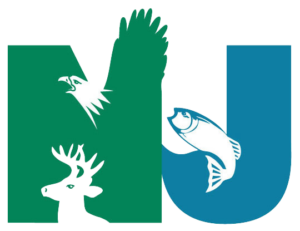
New Jersey Division of Fish and Wildlife
Created in 1892, NJ Fish and Wildlife is a professional environmental agency dedicated to the protection, management and wise use of New Jersey’s fish and wildlife resources.
Fish and Wildlife’s mission is to protect and manage the State’s wildlife resources to maximize their long-term biological, recreational, and economic values for all New Jerseyans.
Our eight bureaus and four offices collectively oversee and execute all of Fish and Wildlife’s activities and programs throughout the State of New Jersey.
New Mexico

New Mexico Game and Fish Department
The New Mexico Department of Game and Fish brings nearly $1 billion a year to the state’s economy, often to rural areas where funds are needed most. Receiving no money from the state’s General Fund, we are funded by our customers — the hunters, trappers and anglers who enable us to conserve wildlife and provide recreational opportunities that benefit everyone.
License sales annually provide approximately $20 million, our primary funding source. This is supplemented by the federal Sport Fish and Wildlife Restoration Program which provides an additional $12 million by matching on a three-to-one basis the dollars we invest in conservation. With these funds from hunting, trapping and fishing we provide services that extend far beyond license sales or simply patrolling for poachers.
New York
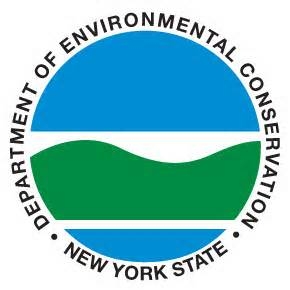
New York Department of Environmental Conservation
The New York State Department of Environmental Conservation (DEC) was created on July 1, 1970 to combine all state programs designed to protect and enhance the environment into a single agency.
DEC’s goal is to achieve this mission through the simultaneous pursuit of environmental quality, public health, economic prosperity and social well-being, including environmental justice and the empowerment of individuals to participate in environmental decisions that affect their lives.
North Carolina
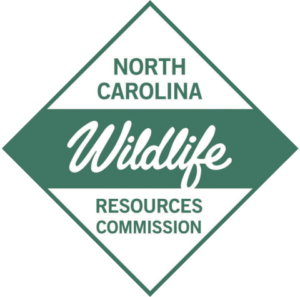
North Carolina Wildlife Resources Commission
The N.C. Wildlife Resources Commission (NCWRC) is the state government agency created by the General Assembly in 1947 to conserve and sustain the state’s fish and wildlife resources through research, scientific management, wise use and public input. The NCWRC is the regulatory agency responsible for the enforcement of North Carolina’s fishing, hunting, trapping and boating laws.
The sale of hunting and fishing licenses, federal grants and other receipts provides financial support of the agency. The agency has an operational budget of approximately $85 million and employs approximately 650 full-time staff and 100 seasonal temporary staff across the state, including wildlife and fisheries biologists and technicians, wildlife law enforcement officers, wildlife educators, communication specialists, and customer service, information technology and administrative professionals.
North Dakota
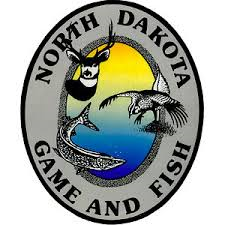
North Dakota Game and Fish Department
The mission of the North Dakota Game and Fish Department is to protect, conserve and enhance fish and wildlife populations and their habitat for sustained public consumptive and nonconsumptive use.
The creation in 1930 of the North Dakota Game and Fish Department was a continuation of efforts to preserve fish and game species in the state. At its inception the enforcement of game and fish laws was the department’s primary conservation tool. Over the years the legislature has increased enforcement authority and assigned regulatory powers to the agency aiding its efforts to preserve fish and wildlife and their habitats.
Ohio
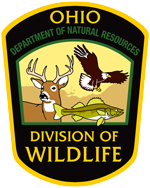
Ohio Division of Wildlife
The Division of Wildlife’s mission is to conserve and improve fish and wildlife resources and their habitats for sustainable use and appreciation by all.
Land acquisition, harvest regulations, and licensing are fundamental tools in the management of Ohio’s wildlife resources. The division manages or cooperates in managing over 750,000 acres of diverse wildlife lands throughout the state, plus more than 2 1/4 million acres of water.
Oklahoma
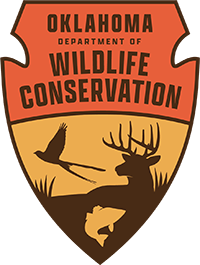
Oklahoma Department of Wildlife Conservation
The Oklahoma Department of Wildlife Conservation (ODWC) with its 359 employees is responsible for managing Oklahoma’s fish and wildlife resources and habitat.
Early Oklahoma conservationists fought to save the last remnants of the state’s game animals and fish for future generations. The men who formulated Oklahoma’s modern wildlife conservation practices in the ’40s and ’50s, emphasized the wise use of our outdoor resources. They built a tradition, a tradition based on providing variety and quality in state hunting and fishing. The Department has retained this tradition it will continue to clearly demonstrate this by building for the future a healthy environment where nature can survive in harmony with the needs of modern man.
Oregon
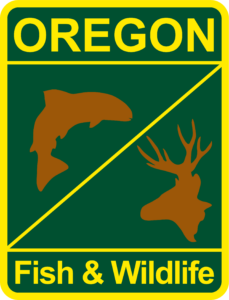
Oregon Department of Fish and Wildlife
The Oregon Department of Fish and Wildlife’s Our mission is to protect and enhance Oregon’s fish and wildlife and their habitats for use and enjoyment by present and future generations.
ODFW is headquartered in Oregon’s capitol city of Salem. The agency works through a regional management structure that allows for fish and wildlife management at the local, watershed level. Its local field offices are divided into two regions (West and East) with four to six watershed districts in each of those regions.
Pennsylvania

Pennsylvania Game Commission
For more than 100 years, the Game Commission has managed the Commonwealth’s wildlife resources for all Pennsylvanians. With the help of more than 700 full-time employees and thousands of part-timers and volunteers, the agency provides a host of benefits to wildlife, state residents, and visitors.
In the late 1800s, however, wildlife was dwindling as a result of deforestation, pollution, and unregulated hunting and trapping. From this dark period emerged the Game Commission, created by the state Legislature to protect and conserve wildlife, which was then commonly referred to as “game.” The wildlife diversity we enjoy today is largely due to the agency’s progressive, scientifically-based wildlife management programs and support from countless Pennsylvanians and outdoors organizations.
Rhode Island
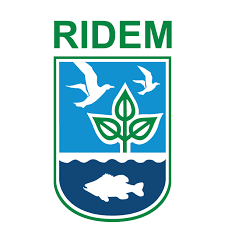
Rhode Island Division of Fish and Wildlife
The Rhode Island Division of Fish and Wildlife’s mission is to ensure that the Freshwater and Wildlife Resources of the State of Rhode Island will be conserved and managed for equitable and sustainable use.
As part of a larger network of recreational opportunities in Rhode Island, hunting and fishing play an important role in connecting people with nature, supporting quality of life and family traditions, and attracting tourism. Fishers and hunters purchase around 70,000 licenses, permits, stamps, and tags each year and contribute more than $235 million to Rhode Island’s economy. Revenue generated from license and permit sales support Rhode Island fish and wildlife conservation programs. A critical source of funding, these monies are leveraged to match federal Wildlife and Sport Fish Restoration Program dollars that support outdoor recreational opportunities for fishing, hunting, and boating in Rhode Island.
South Carolina
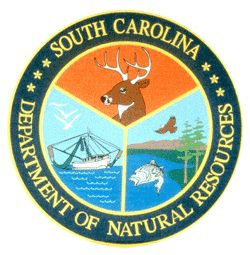
South Carolina Department of Natural Resources
South Carolina Department of Natural Resources’ mission is to serve as the principal advocate for and steward of South Carolina’s natural resources.
Their vision for the DNR is to be a trusted and respected leader in natural resources protection and management, by consistently making wise and balanced decisions for the benefit of the state’s natural resources and its people.
South Dakota
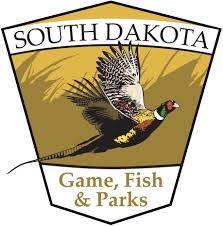
South Dakota Game Fish and Parks Department
The South Dakota Game Fish and Parks Department describes themselve as,”At our core, we provide incredible opportunities and experiences that keep our customers coming back to the South Dakota outdoors. We are the number one brand that conserves our state’s outdoor heritage to enhance the quality of life for current and future generations. That’s us. That’s GFP”
Their mission statement is, “We serve and connect people and families to the outdoors through effective management of our state’s parks, fisheries and wildlife resources”.
Tennessee
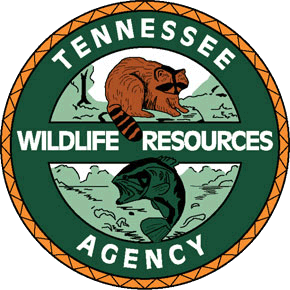
Tennessee Wildlife Resources Agency
The Mission of the Tennessee Wildlife Resources Agency is to preserve, conserve, manage, protect, and enhance the fish and wildlife of the state and their habitats for the use, benefit, and enjoyment of the citizens of Tennessee and its visitors. The Agency will foster the safe use of the state’s waters through a program of law enforcement, education, and access.
The Tennessee Wildlife Resources Agency has come a long way since it was established in 1949 and was called the Game and Fish Commission. Completely reorganized in 1974, it now consists of more than 600 professionals dedicated to the preservation, conservation, and enhancement of Tennessee’s fish and wildlife for the enjoyment of all Tennesseans and our visitors.
Texas

Texas Parks and Wildlife Department
The Mission the Texas Parks and Wildlife Department is to manage and conserve the natural and cultural resources of Texas and to provide hunting, fishing and outdoor recreation opportunities for the use and enjoyment of present and future generations.
Currently, the agency has 13 internal divisions: Executive, Wildlife, Coastal Fisheries, Inland Fisheries, Law Enforcement, State Parks, Infrastructure, Legal, Financial Resources, Communications, Human Resources, Support Resources, and Information Technology. The Chief Operating Officer provides special counsel to the executive director in the areas of operations and administrative matters. Intergovernmental affairs as well as internal audit and investigations are administered through the Executive Office.
Utah

Utah Division of Wildlife Resources
The Utah Division of Wildlife Resources (DWR), part of the Utah Department of Natural Resources (DNR), serves the people of Utah by managing, sustaining and enhancing the state’s wildlife populations and by conserving wildlife habitat. The Division also oversees hunting and fishing opportunities statewide.
The Division’s innovative habitat program leads North America in restoration efforts. Through Utah’s Watershed Restoration Initiative and with the help of over 100 partners, the state has restored and rehabilitated nearly 2.25 million acres of land statewide.
Vermont
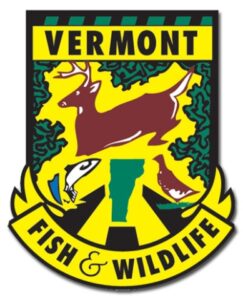
Vermont Department of Fish and Wildlife
The department’s mission is “the conservation of fish, wildlife and plants and their habitats for the people of Vermont.”
Other challenges include providing quality fish and wildlife-based recreation and reaching Vermonters with the best possible information about these resources.
The Vermont Fish & Wildlife Department is one of three departments in the Agency of Natural Resources. Our $20 million (annual budget) is funded by three major sources: user-based fees such as licenses, excise taxes on gasoline and on hunting and fishing equipment, and state general funds.
Virginia

Virginia Department of Game and Inland Fisheries
The Department of Wildlife Resources (DWR) is responsible for the management of inland fisheries, wildlife, and recreational boating for Virginia. We are leading wildlife conservation and inspiring people to value the outdoors and their role in nature.
The Virginia Department of Wildlife Resources’ mission is to: Conserve and manage wildlife populations and habitat for the benefit of present and future generations, connect people to Virginia’s outdoors through boating, education, fishing, hunting, trapping, wildlife viewing, and other wildlife-related activities and protect people and property by promoting safe outdoor experiences and managing human-wildlife conflict.
Washington
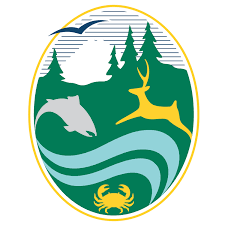
Washington Department of Fish and Wildlife
The Washington Department of Fish and Wildlife is dedicated to preserving, protecting, and perpetuating the state’s fish, wildlife, and ecosystems while providing sustainable fish and wildlife recreational and commercial opportunities.
Headquartered in Olympia, the department maintains six regional offices and manages dozens of wildlife areas and hundreds of water access areas around the state, offering fishing, hunting, wildlife viewing, and other recreational opportunities for the residents of Washington.
West Virginia
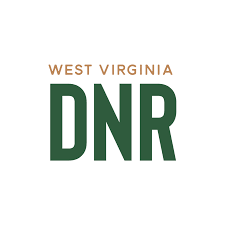
West Virginia Division of Natural Resources
It is the statutory mission of the West Virginia Division of Natural Resources to provide and administer a long-range comprehensive program for the exploration, conservation, development, protection, enjoyment, and the use of the natural resources of the State of West Virginia.
DNR’s Wildlife Resources Section conserves , protects and manages the state’s fish and wildlife resources for the use and enjoyment of its citizens. The primary objective of the section is to maintain and perpetuate fish and wildlife at levels compatible with the available habitat, while providing diverse opportunities for recreation, research, conservation and education.
Wisconsin
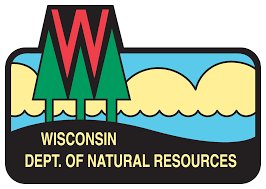
Wisconsin Department of Natural Resources
The Wisconsin Department of Natural Resources mission is to protect and enhance our natural resources: our air, land and water; our wildlife, fish and forests and the ecosystems that sustain all life. To provide a healthy, sustainable environment and a full range of outdoor opportunities. To ensure the right of all people to use and enjoy these resources in their work and leisure. To work with people to understand each other’s views
and to carry out the public will. And in this partnership consider the future and generations to follow.
The DNR is dedicated to working with Wisconsinites while preserving and enhancing the natural resources of Wisconsin. In partnership with individuals and organizations, DNR staff manage fish, wildlife, forests, parks, air and water resources while promoting a healthy, sustainable environment and a full range of outdoor opportunities.
Wyoming
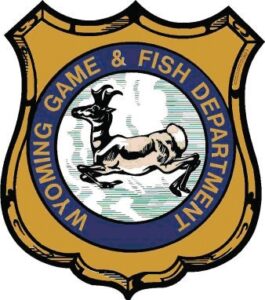
Wyoming Game and Fish Department
The Wyoming Game and Fish Department is dedicated to conserving, enhancing and protecting Wyoming’s exceptional fish and wildlife resources and the habitats that support them.
Wyoming Game and Fish Department currently has ten fish hatcheries, eight fisheries management crews, and six aquatic habitat biologists taking care of Wyoming waters and the fish that live in them. New positions have also been developed such as instream flow biologists who help assure that water flows remain at a level suitable for fish, fish passage habitat biologists who help fish navigate man-made hazards like dams, canals and diversions. Other positions to study nongame fish and native species of interest and concern have also been developed to meet changing needs.
The United Country Difference
United Country Real Estate has been the leader in land sales in America for a century. Our enduring success is due entirely to the innovation, dedication, and perspiration of the agents, brokers, and auctioneers who make up this company. If you are looking to buy or sell a rural, country, or lifestyle property within the United States, or even several other nations in North, South, and Central America, then contact us today to discover the United Country Difference.
